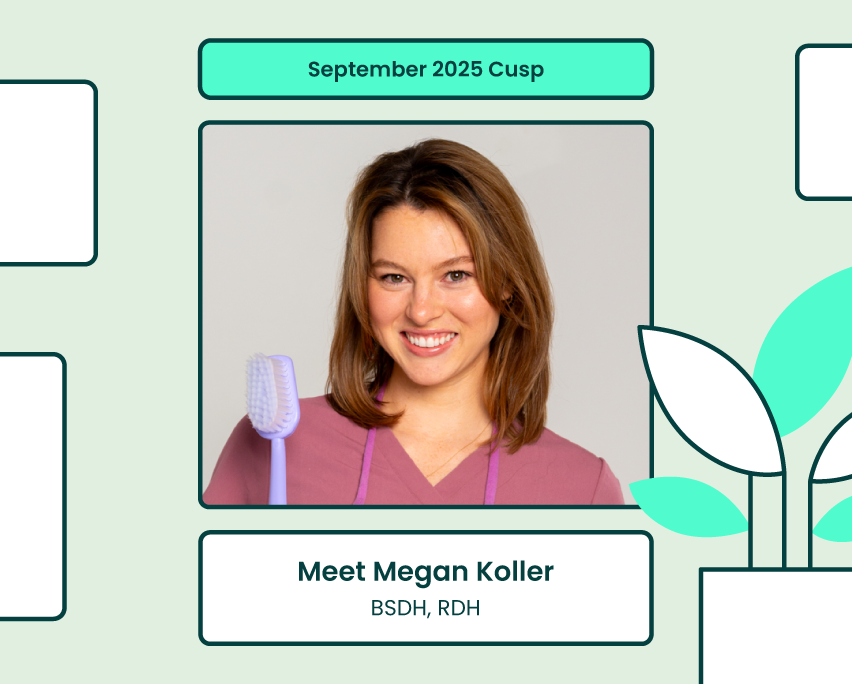
Megan Koller, BSDH, RDH
Share
Megan Koller is a registered dental hygienist and content creator who empowers patients and professionals through relatable education and storytelling. She blends clinical insight with real-life conversations, encouraging providers to see care through both a professional and human lens.
quip: You often share how you teach patients about periodontal disease. What practical tools or chairside techniques do you recommend to help patients understand and manage gum health?
Megan: I love using digital educational aids to give my patients a clear, easy-to-understand visual of bone loss between their teeth. I often compare these visuals to their own radiographs, which helps them fully understand their periodontal condition. For treatment, I typically recommend non-surgical periodontal therapy (NSPT), followed by at-home care with a water flosser, an electric toothbrush, and traditional string floss to maintain periodontal health in the months leading up to their first maintenance visit with me. I provide hands-on instruction, demonstrating proper techniques with both a mirror in their mouth and a typodont at chairside.
quip: Appointment resistance is a common barrier in preventive care. How do you handle patients who cancel or avoid visits, and what communication tips can help providers improve patient compliance?
Megan: Appointment resistance is common, especially with patients who prefer six-month periodontal maintenance visits. I avoid pressure and instead invite them into a conversation, using visuals and radiographs to explain the long-term risks of delaying care. If they still choose six months, I document the decision and clarify it isn’t my recommendation. This respectful, educational approach builds trust and gradually improves compliance.
quip: You create tutorials for brushing and flossing, which seems basic but is often the hardest thing to get patients to do consistently. What’s your best advice for motivating lasting habit change?
Megan: I know that I’m beating a dead horse, but flossing is truly the one thing I have had to recommend over and over again to my patients. I truly don’t believe it is the lack of remembering to do it, I believe most patients simply don’t understand the importance of it and how to do it correctly.
I spend extra time with a hand mirror explaining the proper c-shape method in their mouth in order to help them visually see the benefits. I find this helps give my suggestion more weight over simply saying “you need to floss more.”
quip: Burnout is a growing challenge in the profession. What self-care habits or workflow adjustments have helped you maintain your energy and provide high-quality patient care?
Megan: Truthfully, the biggest change I made this year was leaving a dental office that was not serving me anymore and contributing to my professional burnout. It was one of the most difficult decisions I’ve had to make, but since changing spaces I’ve realized that a high-volume patient environment really isn’t for me.
Finding a practice that aligns with my personal and professional values allows me to go to work happy instead of stressed and burnt out. I treat my patients better when I am in a positive working environment that values my opinions and respects me as a provider.
quip: Community is at the heart of your work. How can healthcare professionals support one another better, both online and in the operatory, to elevate the profession as a whole?
Megan: Healthcare providers can support one another better both online and in the operatory by uplifting each other’s work, treating one another with kindness, and grace.